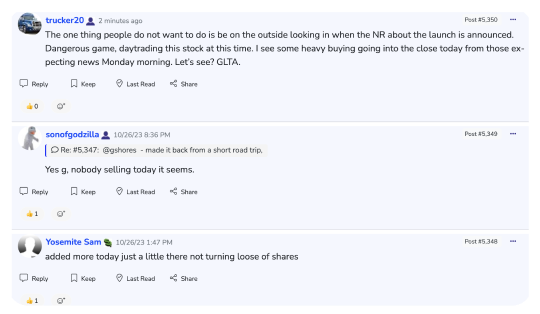Thursday, January 05, 2006 12:22:04 PM
Factfile on bird flu
PARIS - Following is an updated factfile on H5N1 avian influenza:
WHAT IS BIRD FLU? Bird flu is also called avian influenza. There are 15 strains of flu that affect birds, but the one behind the global health scare is the H5N1 subtype. The first known cases of bird flu were detected in Hong Kong in 1997 and also involved H5N1.
HOW IT SPREADS TO HUMANS: Almost all the human cases of bird flu have been people who were directly exposed to infected fowl. They made contact with the virus through the birds' saliva, nasal secretions and faeces, which become dry, pulverised and are then inhaled.
THE TOLL: If two new fatalities in Turkey and a 12th death in Indonesia are confirmed as having been caused by H5N1, the strain will have killed 77 people in six countries since it erupted in Southeast Asia in 2003. The World Health Organisation (WHO) website lists 74 deaths from H5N1 out of 142 cases as of December 30. Vietnam, with 42 deaths, has the most.
SYMPTOMS: Bird flu in humans causes symptoms that are like human flu, such as fever, cough, sore throat and muscle aches, conjunctivitis, pneumonia and other severe respiratory diseases.
IS CHICKEN SAFE? Avian flu is not a food-borne virus, so the risk from eating properly-cooked poultry is considered negligible.
THE RISK: At present, H5N1 is not easily transmitted from bird to human. In other words, a person would have to pick up a lot of virus in order to be infected. Nor is it easily passed from human to human: there have been only three suspected cases where this is believed to have happened. The big worry is that H5N1 could pick up genes from conventional human flu viruses, making it both highly lethal and highly infectious. As it would be a radically new pathogen, no one would have any immunity to it. The mutation could occur if H5N1 co-infects a human who already has ordinary flu or the agent is picked up from poultry by an animal such as a pig that can carry bird and regular flu strains.
PAST PANDEMICS: The 20th century saw three flu pandemics, in 1918-19, 1957-58 and 1968-69. The 1918-19 pandemic killed as many as 50 million people -- more than the death toll from AIDS in more than two decades. Jet travel, the world's huge population today and the larger number of people with compromised immune systems (from AIDS and cancer, for instance) as compared with 1918 mean the toll from so-called Spanish flu could be easily surpassed.
ECONOMIC COST: A global pandemic of any scale would cost hundreds of billions of dollars because of the disruption to economic life. The World Bank estimates a bill of 550 billion dollars (465 billion euros) for rich countries alone. The Asian Development Bank (ADB) estimates costs for Asia ranging from 99 to 283 billion dollars. AS a comparison, Severe Acute Respiratory Syndrome (SARS), which killed fewer than 800 people in its 2003 outbreak, cost more than 30 billion dollars.
VETERINARY CONTROLS: These are the time-honoured first line of defence in any outbreak of animal disease. The task is to identify farms where there is an outbreak of H5N1, quarantine the area, kill all fowl suspected to be in contact with it, disinfect machinery, vehicles and clothing, and bar sales of poultry products from the affected region. But these controls are only really dependable if a country has a good surveillance network and responds quickly and effectively to an outbreak. Adequate compensation, too, is essential for encouraging honest reporting by farmers.
COUNTER-MEASURES: A world conference in Geneva last November declared that up to a billion dollars will be needed over the next three years to help poor countries shore up their defences, including 35 million needed over the following six months. The action plan stresses greater veterinary surveillance to detect outbreaks, preventative vaccination of poultry, culling of infected flocks and compensation for farmers. Its other focus is on strengthening health monitoring systems, stockpiling of antiviral drugs to dampen the spread of an outbreak and exercises to train medical personnel and the public.
VACCINE: No definitive vaccine against the viral threat is available as no-one knows the precise shape it will take after mutating to the feared highly contagious form. Several prototypes are being explored. But the risk is that they could be only partially effective or even useless because the virus' genetic shape will have changed and thus will not be recognised by antibodies. If a pandemic does occur, the big concern is about the delay. It could take up to six months to formulate and test the right vaccine, which will only be available in limited quantities immediately thereafter. Traditionally, flu vaccines take up to nine months to manufacture, using egg-based technology, although ways of speeding this up using genetic "reverse engineering" are being intensively explored.
DRUG ARSENAL: The range of antiviral drugs is small, but especially so when it comes to bird flu. Only two are considered effective against H5N1: zanamivir (commercialised as Relenza) and oseltamivir (Tamiflu). These medications are called neuraminidase inhibitors, which block the virus from replicating. If taken within a couple of days of the onset of illness, they can ease the severity of some symptoms and reduce the duration of sickness. The WHO recommends countries stockpile antivirals, but does not give a figure as to how big that stockpile should be. It hopes to have its own stockpile, sufficient for three million people, by early 2006. A looming worry is whether the shifting virus might become resistant to Tamiflu.[/B]
Sources: WHO, US Centers for Disease Control and Prevention (CDC), US National Institutes of Health (NIH), World Organisation for Animal Health (OIE), Nature, British Medical Journal (BMJ), The Lancet, New England Journal of Medicine (NEJM), US Department of Health and Human Resources, news reports.
01/05/2006 12:22 GMT
Published: 1/5/2006
Join the InvestorsHub Community
Register for free to join our community of investors and share your ideas. You will also get access to streaming quotes, interactive charts, trades, portfolio, live options flow and more tools.









